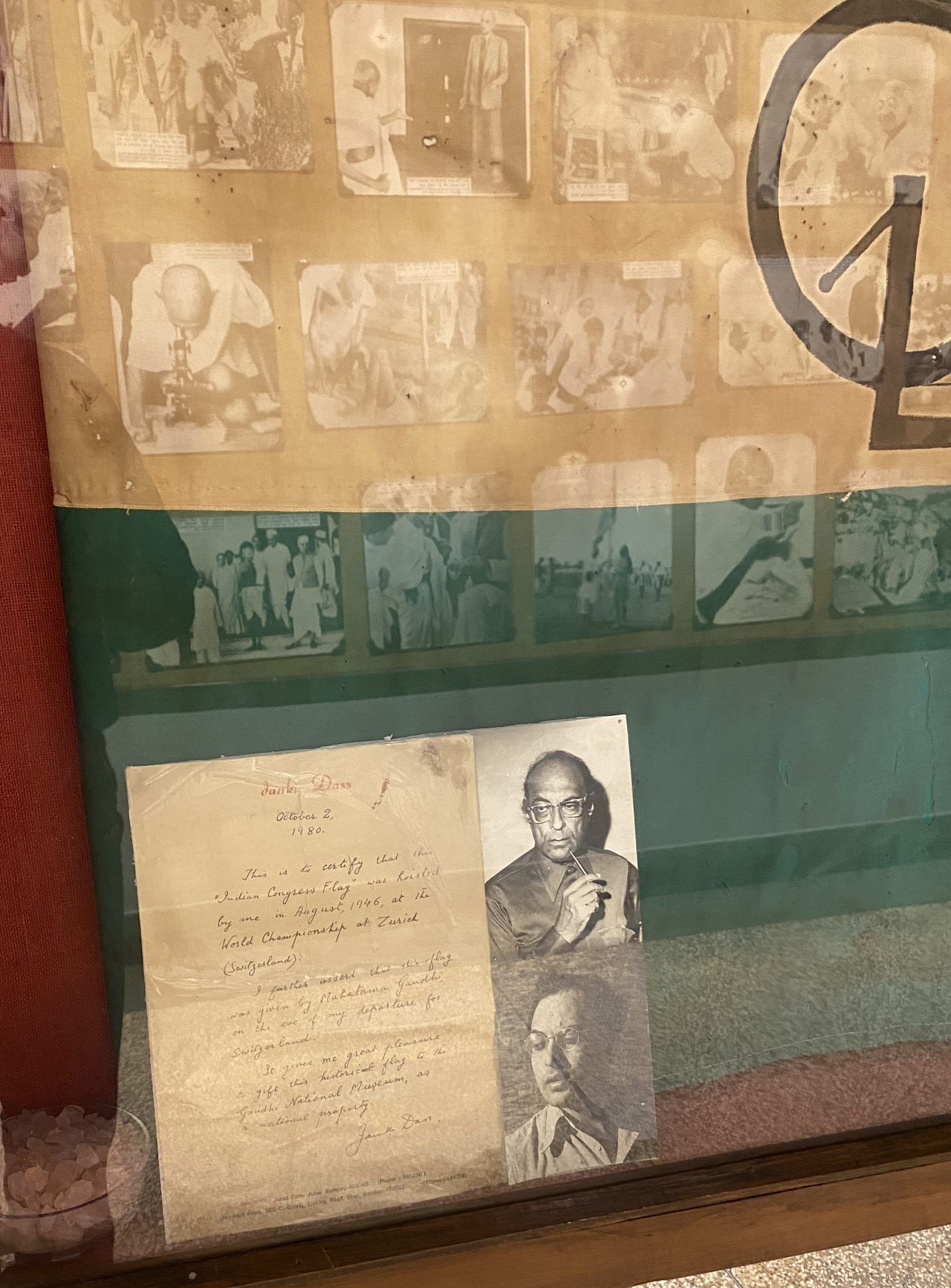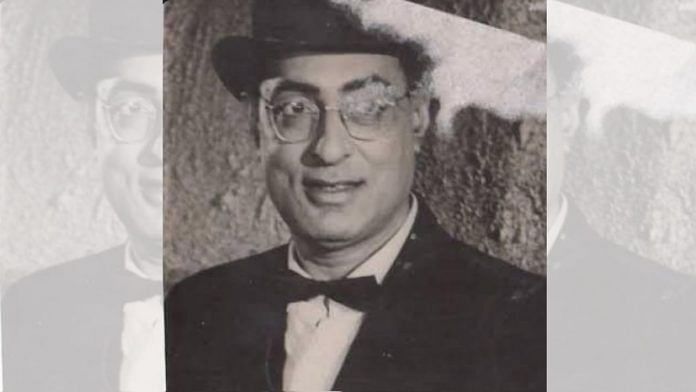Parliamentary Affairs Minister Kiren Rijiju on 20 August shared a post on X about “the unsung Indian sports hero” Jankidas Mehra. The post made a few claims about the sportsperson, who was also an actor.
He said that Mehra was the only Indian member in the International Olympic Squad from the British Imperial Empire in the 1936 Berlin Olympic Games; That Mehra won the cycling race and broke the world record at the event; On finishing the race, he unfurled the Indian flag, for which he was disqualified and not given his medal. The post also said that he broke the world record once again in 1942 and called it quits as a matter of protest for freedom from the British.
The supposedly inspiring write-up was reposted over 1,500 times on the platform, and elicited a response from Jankidas’ grandson Ricky Kej, who thanked Rijiju.
“He (Jankidas Mehra) did so much during his illustrious lifetime, but he is largely unsung. I am deeply inspired by him. Very grateful to you,” wrote Kej.
Information about Mehra’s international achievements can be found in numerous other stories across the internet.
While India frequently overlooks its true heroes, Mehra was not one of them, at least in the context of the Olympics. The official website of the Olympics confirms that no Indian cyclist competed in the cycling events in Berlin in 1936.
Hence, there is no basis for claims that Mehra unfurled the Indian flag and faced disqualification. Moreover, there were no Olympics held in 1942 due to World War II. In reality, Mehra never represented India at the Olympics.
There is, however, a story involving a Congress flag—rather than the Indian flag—connected with Mehra. The National Gandhi Museum in Delhi has on display an old Congress flag with a charkha (spinning wheel) in the centre. It is accompanied by a note from Mehra at the bottom of the showcase.
Dated 2 October 1980, the note, written on his letterhead, reads, “This is to certify that the “Indian Congress Flag” was hoisted by me in August 1946 at the World Championship at Zurich (Switzerland). I further assert that this flag was given by Mahatama Gandhi on the eve of my departure for Switzerland…”

Self-certification is generally considered solid evidence, but even this claim appears questionable. There is no record of Gandhi presenting Mehra with the flag in any Gandhian documentation or major newspapers like The Times of India or the The Bombay Chronicle.
In his book Naked Beauty Creates A Tale of Two Museums, Mehra recounts his meeting with Gandhi that raises more questions than it answers.
For instance, on page 31, he states that he “took the first train to Ahmedabad” to see Gandhi, yet on page 91, he claims he “took the first train to Jagannath Puri and then to the Ashram where Mahatma Gandhi was staying”. However, Gandhi was actually in Maharashtra’s Poona, Panchgani, and Uruli Kanchan from July to the first week of August 1946.
Mehra also asserts that “Gandhiji signed one corner of the flag and, patting me on the back, promised to send me a congratulatory cable if I unfurled my own flag at the World Championship instead of the Indian Union Jack”.
However, it should be noted that there is no signature of Gandhi on the flag displayed at the National Gandhi Museum. The statements attributed to Gandhi by Mehra in his book appear to be more of a product of imagination and self-importance than factual accuracy.
Also read: Ram is everyone’s God, said Gandhi. ‘Establish his kingdom in your heart’
Facts and fiction
Before the games began in Zurich, Vernon Morgan, sports editor of Reuters, reported: “India’s national flag will fly for the first time in Europe next week when the film actor cyclist, Mehra, carries it high during the march past of the nations at the World Cycling Championships in Zurich”.
Morgan quoted Mehra as saying, “I think it is 150 years since our tricolour was carried at an international sports meeting, and to think that I should be the Indian to carry it—why, it is wonderful.” (Times of India, 17 August 1946, page 10).
There was no mention of Gandhi presenting him with the Congress flag.
Mehra had every reason to take pride in holding the Congress flag in an international event. However, claiming it as the “first in 150 years” is factually incorrect, as the Indian flag was first introduced in 1906.
On the return of Indian cyclists, The Times of India reported that the team carried “an Indian national flag which flew with 20 others over the Zurich tracks”.
It further stated, “The team manager, Mehra, said: “I intend to present this historic flag to Pandit Jawaharlal Nehru of the Indian National Government personally”. (The Times of India, 9 September 1946, page 9) There was no mention in the report that the flag was given by Gandhi. It seems Mehra was unable to present the flag to Nehru as planned, which is why he donated it to the National Gandhi Museum in 1980.
Nearly a decade after donating the flag to the National Gandhi Museum and five decades after the Zurich games, Mehra asserted a new connection with Gandhi. In a column titled ‘Andar Ki Baat’ (The Inside Story) published in the Hindi film monthly Priya, he claimed, “Gandhi sent me a message when I was leaving for Zurich in 1946”. (Priya, October 1990, page 21)
The main focus of the Priya column was how Mehra enlisted his friend and renowned actor Ashok Kumar for a friendly cycle race at the Brabourne Stadium in Bombay to raise funds for the Indian cycling team’s participation in the 1952 Helsinki Olympics. Mehra claimed to have raised over Rs one lakh, which he said helped the team travel to Helsinki, Finland. While the event on 18 May 1952 did take place as reported in the sports news at that time, the success of the event was contested. Columnist Leon, writing in Sports News and Views of the Day, described it as an “utter failure” in achieving its intended goals.
Leon appeared to hold an unflattering view of Mehra, and often referred to him sarcastically as ‘world-renowned’. He wrote: “Instead of raising enough money to cover the expenses for Sohrab Bhoot, Jankidas Mehra, and Nariman Saugar’s trip to Helsinki, the much-publicised event ended up incurring a loss of about four thousand rupees. Efforts are now underway to address this unforeseen deficit”. (The Times of India, 28 August 1952, page 8)
Also read: What the West wrote on India’s independence in 1947 — Observer, Scotsman to NYT
‘A cyclist of great promise’
Mehra was a well-known cyclist from Punjab. He was sent to the British Empire Games in Sydney in 1938 as an unofficial representative of India. The decision was taken by GD Sondhi, then secretary general of the Indian Olympic Association, on a strong recommendation by the Punjab Cycling Association, the only organising cycling body of India. Later, however, an infringement of the IOA constitution brought about the resignation of Sondhi. (The Times of India, 31-1-1938, page 12)
Mehra received praise as a cyclist in Sydney but did not win any medals, nor did he break any records. EJ Southcott, Vice President of the National Cyclists’ Union , Britain stated, “In Jankidas, India had a racing cyclist of great promise” (The Times of India, 12 March 1938, page 21).
However, this promise never saw fruition on the international stage. Mehra claimed in his book that he “broke eight World Cycling Records during 1934 to 1942, in India and abroad…including the world 1/2 mile record in 50.1 seconds at Sydney in 1938”.
He also claimed to be India’s sole representative at the British Empire Games at Sydney in 1938, the East Asian Games at Tokyo in 1940 and the 1946 Cycling World Championships at Zurich.
While Mehra did participate in the Empire Games, he did not win any medal. There is no record of India as a participant in the 1940 East Asian Games, and at Zurich, Mehra was the team manager and not a player.
Fellow Indian cyclist B Malcolm disagreed with Mehra’s claims of numerous records. In response to Vishwa Nath’s letter published in The Times of India in 1938, Malcolm noted that claims of Mehra holding world and British Empire Games records were “news to both international cycling authorities and the cycling community”.
He added, “Suffice it to say, Jankidas has yet to compete in any open cycling event in India…” (Times of India, 28 October 1938, page 17).
Even Mehra’s film career is plagued by dubious claims. His first role was in Khazanchi (1941), produced by Dalsukh Pancholi, a well-known Gujarati film studio owner based in Lahore. In the film credits, he was listed as ‘Janki Dass M.A. (World Cycle Champion)’. Although he appeared in numerous films as a character actor, he made tall claims about his film career that were as questionable as those about his sporting achievements.
For instance, Mehra claimed to have introduced “India’s top heroines” to the film industry, such as Madhubala in Sohrab Modi’s Daulat (1949) and Meena Kumari in Nanabhai Bhatt’s Hamara Ghar (1950). However, historically, both Madhubala and Meena Kumari began their careers as child artists in the late 1930s and early 1940s, well before Mehra’s alleged introductions.
The story of Mehra thus remains an intriguing blend of fact and fiction, seamlessly woven together by the cyclist-actor himself.
Urvish Kothari is a senior columnist and writer based in Ahmedabad. He tweets @urvish2020. Views are personal.
(Edited by Aamaan Alam Khan)






